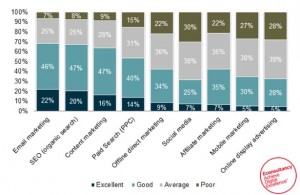Your startup is growing, so it’s time to hire for a few new roles. You haven’t had much experience hiring, however — you built your current team with a few industry friends. But, now you want to adopt some solid HR practices so you can hire smart.
Let’s start with the employment contract. There are a few things you must include to help protect both your new hire and your business when making a job offer.
Here’s what every employment contract should include:
1. Job information.
Some key pieces of information to start with include the job title and the team or department with which the employee will work. Explain how performance will be evaluated and to whom the new hire will report.
2. Compensation and benefits.
Outline the compensation and benefits package. It should include the annual salary or hourly rate, information about raises, bonuses, or incentives and how these may be obtained. Explain what the benefits plan includes — medical, dental, eye care, etc. — what percent the employer pays, and what percent the employee pays. If offered, include information about the 401(k) plan, stock options, and any fringe benefits.
3. Time off, sick days, and vacation policy.
Thoroughly explain the time off policy. How many paid vacation days are accrued per pay period? Do vacation days increase with long tenure? Also explain your expectations regarding sick days, family emergencies, or unpaid leave. Can employees make up hours by working after-hours and weekend events?
4. Employee classification.
Define whether the new hire is an employee or contractor to ensure tax and insurance compliance. Uber has faced many lawsuits due to employment misclassification and continues to fight it. Learn what distinguishes employees from contractors, and classify employees correctly right from the beginning so you won’t have to worry.
5. The schedule and employment period.
The contract should clearly state if employment is ongoing or for a set term. It should also include when the employee is expected to work to define the employer-employee relationship.
Include the amount of hours the employee is expected to work and any flexible working options like working from home or remotely while out of town. If the job requires working nights and weekends, explain when and how often.
6. Confidentiality agreement.
Protect sensitive information like business trade secrets and client data by having the employee sign a confidentiality agreement within the contract. Instead of making this a separate contract or piece of paper, include it as a section of the employment contract and place a field in the section where new hires can sign digitally.
7. A technology privacy policy.
Clarify what’s OK and what’s not regarding the use of social media and email on company property. For example, if you don’t want employees to use company computers or mobile devices to update their personal social media channels or check personal email, say so. If you don’t want employees saying anything negative about work on social media, like these two McDonald’s employees did, prohibit it.
8. Termination terms and conditions.
Explain what is required for either party to terminate the relationship, including the amount of notice required and if it should be written.
9. Severance or outplacement plan information.
It’s a bit early to be thinking about this, but should you or the employee decide to part ways, you’ll want to do so nicely to maintain a positive employer brand. Consider offering severance or an outplacement plan.
10. Requirements after termination.
The contract should include any restrictions or mandates on an employee after leaving the organization. For example, an employee may not be allowed to start his or her own business in the same industry within the same locale in a specified time period or work with the business’s clients independently. Clearly define these terms to help protect your business and its clients.
While these basic elements are a good starting point, there are plenty of other things you can include to further define the role or the business relationship. To simplify writing the contract, use a digital template to help guide you. With a seamless creation and a paperless signing process, your new hire will be on board in no time.
What are some other things you might include in an employment contract? Share in the comments below!
Business & Finance Articles on Business 2 Community(256)





